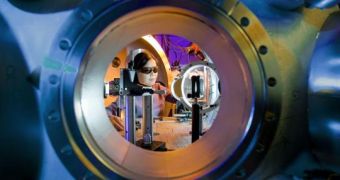A team of scientists from the Lawrence Livermore National Laboratory in California came up with a technique that allows obtaining impressive quantities of antimatter. But as the antimatter suddenly became so easily available, two problems related to it subsequently occurred. The former refers to the possibility of storing it efficiently, the latter involves an even more delicate aspect: what exactly to do with it.
The antimatter particles, called positrons (the opposite of the regular electrons), were obtained while exciting the electrons comprised in a millimeter-thick gold piece by means of a powerful laser source coming from a device called Titan. Then, the electrons begin to "wiggle," according to Peter Beiersdorfer, a physicist on the project, breaking apart into low-energy electrons and antimatter positrons, as they get closer to the gold nucleus.
A small fraction of a second later, they annihilate each other upon contact, resulting in a bright burst of gamma ray energy. The Titan laser, which fires a beam every half an hour, generates about 10 billion positrons, several times more than the other two positron sources, the natural radioactive decay and the large linear accelerators. "This is the first substantial source of antimatter using lasers," shared Hui Chen from the LLNL, quoted by Discovery.
"The first step was to show that you can make enough positrons," stated David Meyerhoffer, a Physics and Astronomy professor from the University of Rochester. "The next step in the research is to come up with an interesting experiment, and that's even more challenging."
The uses proposed for the antimatter obtained involved a better understanding of the symmetry breaking principles of the early universe, enhancing the LHC particle readings, but they could also aid in fields like the military (destroying incoming missiles) astronomy or medicine. In the meanwhile, a 20 times more powerful laser device than Titan, the Omega EP, has just been installed at the University of Rochester to be used next year.

 14 DAY TRIAL //
14 DAY TRIAL //